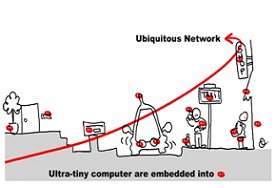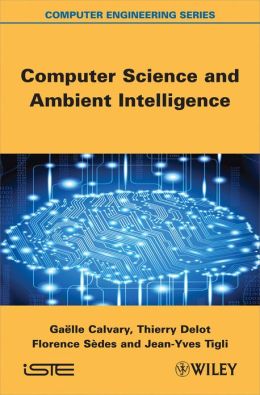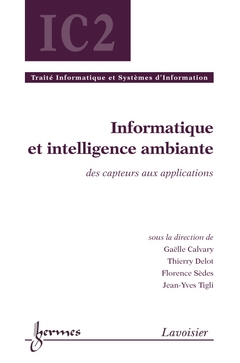Ceci est une ancienne révision du document !
Middleware for Internet of Things


« More than the sum of its devices, the Internet of Things links technologies together to create new services and opportunities. »
Lectures and Personnal Works
Lecture 1 : Introduction to Architecture and Middleware for Internet of Things
- Lecturer : J.-Y. Tigli
- Author : J.-Y. Tigli
Middleware for Internet of Things, a survey on the interoperability challenge and communications patterns
Materials :
Tools for Systematic Literature Reviews and Systematic Mapping Studies
Advanced Search Tools : ACM Digital Library IEEE Xplore Digital Library Scopus Advanced search ScienceDirect Advanced Search elsevier
For Snow balling knovel Google Scholar
Lecture 2 : Network Infrastructure for IoT : ex. LPWA (Low Power Wide Area) networks
- Lecturer : L. Gomez, SAP Research (canceled)
- Prerequisites : c and c++ programming, python programming
Low Powered Network for the Internet of Things
Low Power Network for the internet of Things
Tutorial LoRa: Use LoRa network with the SAP Hana Cloud
Source Code .c, .cpp and .py for tutorial
Other references
Low Power Wide Area Networks: An Overview , Usman Raza, Parag Kulkarni, and Mahesh Sooriyabandara, Toshiba Research Europe Limited, UK,Cornell University online Library, arXiv.org pdf
Lecture 3 : Event Driven Architecture and Middleware for IoT
- Lecturer: J.Y. Tigli and G. Rocher
- Requirements : shell and C# programming (can be replace by C programming), windows PC with Visual Studio and Vmplayer with a linux virtual machine.
IoT : MQTT - OASIS standard / Tutorial MQTT
Event based Middleware and CEP : MQTT tutorial
For more details about MQTT messages format and protocol, see :
MQTT Version 3.1.1 OASIS Standar 29 October 2014
Other materials :
Lecture 4 : CEP (complex event processing) in Event Driven Architecture
Model checking and formal approach for CEP
- Lecturers : I. Sarray & A. Ressouche
- Prerequisites : c programming, notions of logic and automata theory
Lecture: Synchronous language for formal validation - application to CEP (complex event processing) Slides
Tutorial: Creating a Validated CEP node in a MQTT approach Text
Material:
- CLEM: the clem tools useful to design a synchronous road information component Clem software. This archive contains clem, blif_simul and galaxy software both for linux 64 bits and for linux 32 bits. You should put them in a “bin” folder and add the path to this folder in the environment variable PATH of your linux system.
- VERIFICATION: The Clem verification tools must be installed from xeve.tgz and NuSMV-2.6.0.tgz archives (see the tutorial for both xeve and NuSMV installation). You should also add the xeve and the NuSMV software to your “bin” folder. Moreover, a NuSMV executable file is in the archive to be used if it is running in your linux system.
- C CODE: Some C files to help the definition of the MQTT client which contains the CEP validated node defined in your tutorial.
Notice: It is mandatory to have Linux operating system.
Lecture 5 : Service oriented Archtecture and Middleware for IoT : towards Web of Things (WoT) and Web Services for Devices (WSD)
From IoT to WoT/WSD - Tutorial HTTP/CoAP - WS/REST - WSD
Service oriented Middleware and IoT
Tutorial on HTTP RESTFul and CoAP
- Other References :
Zip file of a .Net C# solution with a simple CoAP client and server based on CoAP.Net library
A Perspective on the Future of Middleware-based Software Engineering, Valérie Issarny, Mauro Caporuscio, Nikolaos Georgantas, Workshop on the Future of Software Engineering : FOSE 2007, 2007, Minneapolis, United States. pp.244-258, 2007, pdf file
Lecture 6 : WoT and WSD (Web Service for Device) middleware and software composition - tutorial Ubiquaria
Lecturers : S. Lavirotte & J.Y. Tigli
Lecture 7 : Advanced MIT : SWoT (Semantic Web of Things), middleware and semantic composition (G. Rocher)
Lecturer : G. Rocher, GFI Informatique
Related Works :
- SOFIA EU Project : System Architecture and Networking (SAN) 2009 - 2011
Smart Objects For Intelligent Applications (SOFIA) is funded through the European Artemis programme under the subprogramme SP3 Smart environments and scalable digital service.
The mission of SOFIA project is to create a semantic interoperability platform which enables and maintains cross-industry interoperability which is a platform for new services. Concurrently the solution will foster innovation while maintaining value of existing legacy multi-vendor interoperability platform.
- Industrial products from SOFIA : SMALL at Tecnalia
- Industrial products from SOFIA : SOFIA 2 at Indra
Lecture 8 : Test and Review of students Papers
Review of students Papers before last version one Week after (DEADLINE).
Evaluation Calendar
- Tutorial on Synchronous Language and CEP (depends on lecturers, no before 25/02)
- Final Evaluation : Exam Paper (Tuesday 27 Feb)
- Without document
- MCQ and open questions on all the courses of the module
- Student Paper : (Sunday, 4 March)
Evaluation Rules :
- Evaluation of a Practical Course : Evaluation from the Tutorial of the Modeled Complex Event Processes using Synchronous languages approaches and model checking
- During Lecture 30/1/18 * : one or more MCQ about all the courses and tutorials before
- Other Evaluation during lecture 20/02/18 : MCQ about all the courses and tutorials before.
- Personnal Work : Writing of a short survey paper about a technological or research topic in the field of IoT
(*) optionnal
Personnal Work : Write your own paper
Course Agenda :
Main Conferences and Journals
IoT-EPI - Reference architecture
IoT-European Platforms Initiative
The IoT-European Platforms Initiative (IoT-EPI) was formed to build a vibrant and sustainable IoT-ecosystem in Europe, maximising the opportunities for platform development, interoperability and information sharing. Seven leading research and innovation projects make their technology accessible to 3rd parties about IOT EPI.
Other References
Books
[2013] Gaëlle Calvary, Thierry Delot, Florence Sèdes, Jean-Yves Tigli, editors. “Computer Science and Ambient Intelligence” 335 pages, ISTE Ltd and Wiley & Sons Inc, March 2013, ISBN 978-1-84821-437-8
[2012] Gaëlle Calvary, Thierry Delot, Florence Sèdes, Jean-Yves Tigli. “Informatique et Intelligence Ambiante : des Capteurs aux Applications (Traité Informatique et Systèmes d'Information, IC2)” Hermes Science, July 2012, ISBN 2-7462-2981-1
Videos
Illustrations of Service Continuity Challenge in Ambient Systems
For Mobility : AmbientComp Project, AmbientComp Project For Internet of Things : UbiFlood Project (Research Cooperation Programme with Asia), UbiFlood Project
Illustrations of UbiComp Middleware to facilitate Service Continuity Design in Ambient Systems
For Mobility : Continuum Project (National Research Agency), Continuum Project Videos



